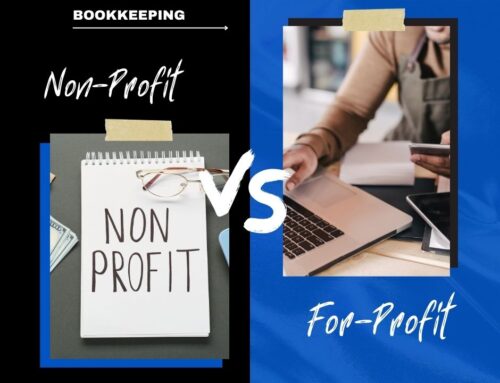Travel expenses are a regular occurrence for running a business. Whether you’re going on a week-long conference out of state, or merely tracking miles to meet with a client, you must have strong bookkeeping practices to account for this information.
Your travel-related costs can maximize your tax deductions or be added to a client invoice while simultaneously improving your budgets and cash flow management.
It doesn’t matter if your company incurs frequent or occasional travel expenses; this guide is useful for every business owner.
Here are the top tips and best practices for managing your travel costs at the bookkeeping level.
Establish a Clear Policy
Your travel policy needs to be formally written so everyone can understand it. Otherwise, your employees will be confused, and issues will be unavoidable.
Clearly state what counts as a travel expense, and explain how your staff should track those expenses. The policy can include things like allowances for meals, lodging, and transportation.
For example, you might give your employees the freedom and flexibility to book their own flights or hotels that will eventually be reimbursed by the company. But you may not want them flying first-class or staying in five-star resorts.
Do you have a per meal allowance? Per day allowance? Or total budget for the trip?
If these policies aren’t established from the beginning, your staff might think they have the freedom to spend as much as they want.
Your business might have partnerships with specific organizations or preferred companies for hotels and airfare. Make sure your employees have access to this list, if applicable.
Group Expenses by Category
What is your most significant travel expense? What’s the average amount your employees spend per meal? Which employees are spending the most money?
You might know your total travel costs in a given month, quarter, or year, but that number doesn’t give you enough information to make business decisions.
Travel expenses are just like every other cost incurred by your business. You want to keep them as low as possible to ensure higher net profits.
The only way to reduce those costs is if you have an accurate understanding of exactly how money is being spent. You need to have clear visibility of every expense.
If your bookkeeper is lumping all travel expenses into just one number in a year-end summary, you won’t be able to make necessary adjustments.
Categorizing expenses allows you to optimize your entire process.
You’ll also be able to identify any unusual costs in an expense report. For example, maybe an employee was sick and needed to visit a walk-in clinic while on a business trip.
Leverage Technology to Improve Your Process
Segmenting expenses by category can be tricky if you’re doing everything manually. This is not the most efficient way for a bookkeeper to spend their time.
The volume of travel costs can add up quickly. Everything from coffee to baggage fees, car rentals, and hotel reservations could result in five or even ten different transactions per day per employee.
This means that your staff needs to save and keep track of every receipt, and your bookkeeper will always have a mountain of paperwork to sort through.
Fortunately, there are plenty of innovative technology solutions that can help you manage your travel expenses.
Rather than keeping physical paper receipts, you can use the Expensify mobile app to take pictures of all receipts. The software will automatically categorize costs and generate reports.
This makes things easier for everyone, from your employees on the road to your bookkeeping team back in the office. Expensify also facilitates direct-deposit reimbursements directly through the platform. So, you won’t have to write live checks for every expense report.
If you or your staff has is using a company credit card for travel expenses, accounting tools like QuickBooks can automatically categorize those costs as well.
Don’t Delay Employee Reimbursement
How long does it take you to approve travel expense reports for employees?
If this process takes too long, it can create significant problems for your company moving forward.
Your employees have already spent money out of their own pockets for work-related activities. They shouldn’t be left with a high credit card bill to pay without adequate funds in their accounts.
If you continually delay reimbursements, your staff could start refusing to go away on a business trip. Or maybe they won’t pick up the bill at lunch with a client if they don’t expect to get paid back for another month. This could be a disastrous scenario for your organization.
By using technology and the other best practices that we’ve discussed so far, there should be no reason for approvals to take so long.
You can even set up automatic reimbursement approvals for things like hotels or meals under a certain amount. Large or irregular purchases can be subject to manual approval.
Allocate Your Costs
If your client engagement letters include travel reimbursement, every travel expense must be allocated to a specific project, client, or campaign.
In some cases, you might be billing a client for all your travel-related costs while working on an assignment for them. If these items are going to appear on an invoice, you need to make sure they are as accurate as possible. Plus, you don’t want to overlook anything and get short-changed.
But even if you’re not seeking payment from a third-party, you should still allocate these costs accordingly.
Without this type of cost allocation, your bookkeeping reports won’t be as accurate.
Return on investment (ROI) is an example of a crucial KPI that needs to be tracked. If travel expenses aren’t assigned to a project, the net profits and returns will be inflated.
This can ultimately cause you to mismanage your cash and inaccurately forecast profits moving forward. At scale, this will be a massive problem for your accounting department and overall health of your business.
Prepare for Changes
Travel, in general, is vulnerable to changes. But business travel is even more susceptible to unplanned cancellations or rescheduling.
Your bookkeeping department must understand how to track and record any of these changes. For example, a canceled flight that was already paid for still needs to go into the books as a prepaid expense.
If airlines or hotels give you credit for changes, make sure you have a record of how much they are and when they need to be used by.
You might end up using a travel credit for one client that was initially prepaid for another event that was changed or canceled. Be sure to make the proper cost-allocation adjustments for the most accurate reporting.
While nonrefundable tickets and purchases are typically cheaper, it could save you money and headaches in the long run by purchasing refundable options.
Conclusion
Travel expenses are necessary. But if you aren’t managing these costs properly, they can eat away at your net profits.
Without bookkeeping practices in place for travel, you won’t know if your employees are inadvertently taking advantage of the system.
Properly tracking and managing your travel expenses ensures that your reports, KPIs, and forecasts are as accurate as possible. You can use this information to reduce costs and make crucial business decisions as well.
An outsourced bookkeeping firm can help you establish a system for tracking, managing, and reporting all travel-related expenses for your business.





